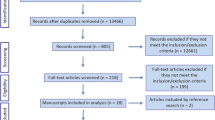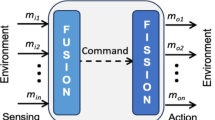Abstract
Visual information concerning characteristics of the environment is critical for safe navigation. The purpose of this study was to determine the importance of vision from the lower visual field for negotiating multi-surface terrain. Ten healthy young adults and ten healthy older adults walked across a walkway where the middle portion consisted of solid, rock, slippery, compliant, tilt, and irregular surfaces (i.e. multi-surface terrain). Participants performed the walking trials with and without special glasses that blocked the lower visual field. Head pitch angle along with step parameters were measured. Young and older adults demonstrated increased mean and maximum head pitch angle downward when the lower visual field was blocked suggesting the importance of vision from this area when stepping on multi-surface terrain. In addition, young and older adults altered their gait pattern by reducing gait speed and step length when the lower visual field was blocked. These results suggest that information from the lower visual field is normally used when walking across multi-surface terrain. The results have implications for those individuals who wear multi-focal glasses and who use them while walking in complex environments, which may challenge balance.




Similar content being viewed by others
References
Courtine G, Schieppati M (2003) Human walking along a curved path. I. Body trajectory, segment orientation and the effect of vision. Eur J Neurosci 18:177–190
Crowdy KA, Hollands MA, Ferguson IT, Marple-Horvat DE (2000) Evidence for interactive locomotor and oculomotor deficits in cerebellar patients during visually guided stepping. Exp Brain Res 135:437–454
Davies JC, Kemp GJ, Stevens G, Frostick SP, Manning DP (2001) Bifocal/varifocal spectacles, lighting and missed-step accidents. Saf Sci 38:211–226
Fajen BR, Warren WH (2003) Behavioral dynamics of steering, obstacle avoidance, and route selection. J Exp Psychol Hum Percept Perform 29:343–362
Geruschat DR, Turano KA, Stahl JW (1998) Traditional measures of mobility performance and retinitis pigmentosa. Optom Vis Sci 75:525–537
Hollands MA, Marple-Horvat DE, Henkes S, Rowan AK (1995) Human eye movements during visually guided stepping. J Mot Behav 27:155–163
Imai T, Moore ST, Raphan T, Cohen B (2001) Interaction of the body, head, and eyes during walking and turning. Exp Brain Res 136:1–18
Joffe KM, Scialfa CT (1995) Texture segmentation as a function of eccentricity, spatial frequency and target size. Spat Vis 9:325–342
Johnson L, Buckley JG, Scally AJ, Elliot DB (2007) Multifocal spectacles increase variability in toe clearance and risk of tripping in the elderly. Invest Ophthalmol Vis Sci 48:1466–1471
Land MF (2006) Eye movements and the control of actions in everyday life. Prog Retin Eye Res 25:296–324
Lord SR (2006) Visual risk factors for falls in older people. Age Ageing 35–S2:ii42–ii45
Lord SR, Dayhew J, Howland A (2002) Multifocal glasses impair edge-contrast sensitivity and depth perception and increase the risk of falls in older people. J Am Geriatr Soc 50:1760–1766
Marigold DS, Patla AE (2007a) Gaze fixation patterns for negotiating complex ground terrain. Neuroscience 144:302–313
Marigold DS, Patla AE (2007b) Age-related changes in gait for multi-surface terrain. Gait Posture. doi:10.1016/j.gaitpost.2007.09.005
Marigold DS, Weerdesteyn V, Patla AE, Duysens J (2007) Keep looking ahead? Re-direction of visual fixation does not always occur during an unpredictable obstacle avoidance task. Exp Brain Res 176:32–42
Menz HB, Lord SR, Fitzpatrick RC (2003) Age-related differences in walking stability. Age Ageing 32:137–142
Mohagheghi AA, Moraes R, Patla AE (2004) The effects of distant and on-line visual information on the control of approach phase and step over an obstacle during locomotion. Exp Brain Res 155:459–468
Patla AE (1998) How is human gait controlled by vision? Ecol Psychol 10:287–302
Patla AE, Davies TC, Niechwiej E (2004) Obstacle avoidance during locomotion using haptic information in normally sighted humans. Exp Brain Res 155:173–185
Patla AE, Greig MA (2006) Any way you look at it, successful obstacle negotiation needs visually guided on-line foot placement regulation during the approach phase. Neurosci Lett 397:110–114
Patla AE, Niechwiej E, Racco V, Goodale MA (2002) Understanding the contribution of binocular vision to the control of adaptive locomotion. Exp Brain Res 142:551–561
Patla AE, Vickers JN (2003) How far ahead do we look when required to step on specific locations in the travel path during locomotion? Exp Brain Res 148:133–138
Reynolds RF, Day BL (2005) Visual guidance of the human foot during a step. J Physiol 569:677–684
Rhea CK, Rietdyk S (2007) Visual exteroceptive information provided during obstacle crossing did not modify the lower limb trajectory. Neurosci Lett 418:60–65
Rietdyk S, Rhea CK (2006) Control of adaptive locomotion: effect of visual obstruction and visual cues in the environment. Exp Brain Res 169:272–278
Sherk H, Fowler GA (2001) Visual analysis and image motion in locomoting cats. Eur J Neurosci 13:1239–1248
Thies SB, Richardson JK, Ashton-Miller JA (2005) Effects of surface irregularity and lighting on step variability during gait: a study in healthy young and older women. Gait Posture 22:26–31
Tombaugh TN (2004) Trail making test A and B: normative data stratified by age and education. Arch Clin Neuropsychol 19:203–214
Turano KA, Broman AT, Bandeen-Rochie K, Munoz B, Rubin GS, West SK, SEE Project Team (2004) Association of visual field loss and mobility performance in older adults: Salisbury Eye Evaluation Study. Optom Vis Sci 81:298–307
Acknowledgments
The authors wish to thank Bethany Stuart and Drs. Rob den Otter, Jacques Duysens, and Trevor Drew for their help and advice. This study was supported by a Canada Graduate Scholarship from the Canadian Institutes of Health Research (D.S. Marigold) and from the Natural Sciences and Engineering Research Council of Canada (A.E. Patla).
Author information
Authors and Affiliations
Corresponding author
Rights and permissions
About this article
Cite this article
Marigold, D.S., Patla, A.E. Visual information from the lower visual field is important for walking across multi-surface terrain. Exp Brain Res 188, 23–31 (2008). https://doi.org/10.1007/s00221-008-1335-7
Received:
Revised:
Accepted:
Published:
Issue Date:
DOI: https://doi.org/10.1007/s00221-008-1335-7




